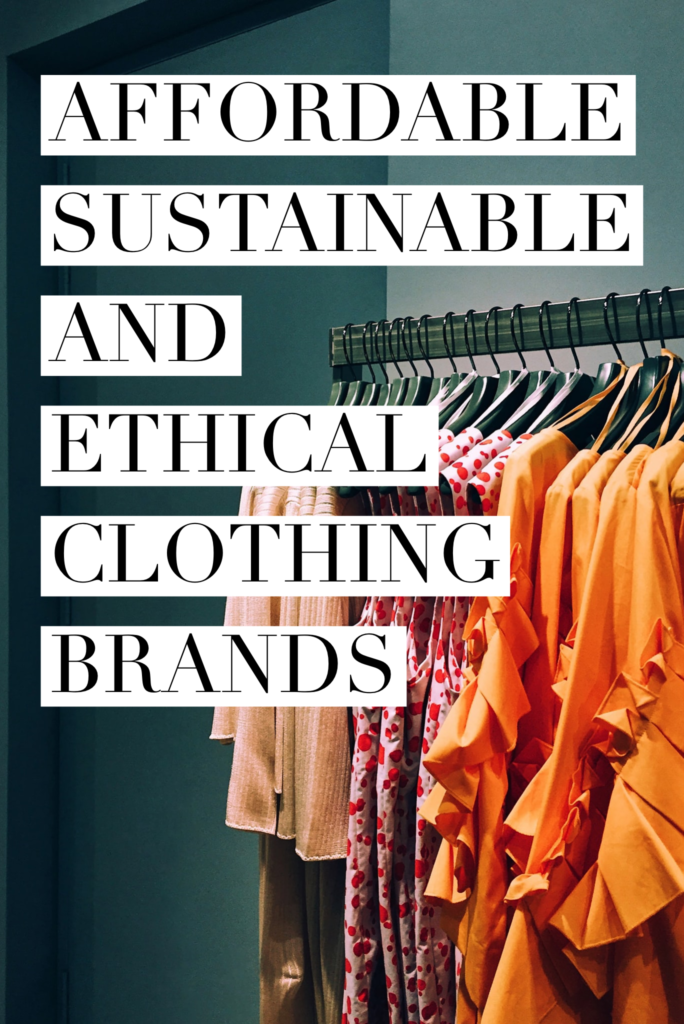Sustainable Fashion Brands

Embracing Eco-Chic: A Guide to Sustainable Fashion Brands
Introduction:
In a world increasingly focused on environmental consciousness, sustainable fashion has emerged as a key player in redefining the way we approach style. Sustainable fashion brands prioritize ethical practices, eco-friendly materials, and fair labor conditions. In this article, we explore the realm of sustainable fashion, showcasing brands that blend style with environmental responsibility.
1. The Rise of Sustainable Fashion: A Paradigm Shift
The fashion industry’s environmental impact has spurred a movement toward sustainability. Sustainable fashion brands aim to minimize harm to the planet by adopting eco-friendly practices throughout the supply chain, from sourcing materials to manufacturing and distribution.
2. Eco-Friendly Materials: The Heart of Sustainable Fashion
Sustainable fashion brands prioritize the use of eco-friendly materials that minimize environmental impact. Organic cotton, bamboo, Tencel, and recycled polyester are among the materials chosen for their lower carbon footprint and reduced use of harmful chemicals.
3. Fair Labor Practices: Ethical Treatment of Workers
Sustainability in fashion extends beyond materials to fair labor practices. Many sustainable fashion brands ensure ethical treatment of workers by adhering to fair wages, safe working conditions, and transparency in their supply chains.
4. Zero-Waste Design: Minimizing Fashion Footprints
Zero-waste design is a key principle embraced by sustainable fashion brands. This approach aims to reduce textile waste by utilizing fabric in its entirety during the design process, minimizing the environmental impact associated with discarded materials.
5. Circular Fashion: Closing the Loop on Fashion Lifecycle
Circular fashion promotes a sustainable model where garments are designed to be recycled or repurposed at the end of their lifecycle. Sustainable fashion brands often incorporate this concept, encouraging consumers to return old garments for recycling or upcycling.
6. Slow Fashion Movement: Quality Over Quantity
In contrast to the fast fashion culture that promotes rapid turnover of trends, sustainable fashion aligns with the slow fashion movement. This approach emphasizes quality over quantity, encouraging consumers to invest in timeless pieces that withstand the test of time.
7. Transparency: Openness in Supply Chains
Sustainable fashion brands prioritize transparency, providing consumers with insight into their supply chains. This openness allows customers to make informed choices, supporting brands committed to ethical and sustainable practices.
8. Vegan Fashion: Cruelty-Free and Chic
Vegan fashion brands avoid the use of animal-derived materials, aligning with cruelty-free principles. These brands often utilize synthetic alternatives, plant-based fabrics, and innovative materials that mimic the look and feel of traditional animal-based textiles.
9. Local and Artisanal Production: Supporting Communities
Some sustainable fashion brands emphasize local and artisanal production to support communities and reduce the carbon footprint associated with global supply chains. This approach fosters craftsmanship and strengthens local economies.
10. Sustainable Fashion for All: Inclusive and Accessible
Sustainable fashion is increasingly becoming inclusive and accessible to a broader audience. Many brands offer a range of sizes, styles, and price points, making ethical and eco-friendly fashion choices available to diverse consumers.
FAQs: Frequently Asked Questions
Q1: Are sustainable fashion brands more expensive than traditional brands? A1: While some sustainable fashion brands may have higher price points, the growing demand for eco-friendly fashion has led to a wider range of options, including affordable and mid-range brands.
Q2: How can I verify if a fashion brand is truly sustainable? A2: Look for certifications such as Global Organic Textile Standard (GOTS) or Fair Trade. Additionally, check a brand’s website for transparency reports and information on their sourcing and manufacturing practices.
Q3: Do sustainable fashion brands compromise on style? A3: Not at all. Many sustainable fashion brands prioritize both style and sustainability. From minimalist designs to fashion-forward pieces, sustainable fashion is diverse and on-trend.
Q4: Can sustainable fashion be inclusive of different body sizes? A4: Yes, many sustainable fashion brands are working towards inclusivity, offering a wide range of sizes to cater to diverse body shapes and sizes.
Q5: What is the difference between sustainable fashion and eco-friendly fashion? A5: Sustainable fashion encompasses a broader scope, including ethical practices, fair labor, and durability. Eco-friendly fashion specifically focuses on minimizing environmental impact through the use of sustainable materials and processes.
Q6: Are there sustainable alternatives to leather? A6: Yes, sustainable fashion brands often use alternatives to traditional leather, such as plant-based materials (like pineapple or mushroom leather) and recycled synthetics.
Q7: How can I dispose of old clothing sustainably? A7: Look for brands with take-back programs, donate to local charities, or explore textile recycling facilities in your area. Upcycling or repurposing old clothing is also an eco-friendly option.
Q8: Are sustainable fashion brands against trends and seasonal collections? A8: While sustainable fashion may not follow the traditional fast fashion model, it is still influenced by trends. Many brands, however, focus on creating timeless pieces that transcend seasonal cycles.
Q9: Can I find sustainable activewear and sportswear brands? A9: Yes, there are several sustainable activewear brands that prioritize eco-friendly materials, ethical production, and durability for those leading an active lifestyle.
Q10: How can I support sustainable fashion on a budget? A10: Look for sales, shop secondhand, and explore budget-friendly sustainable brands. Investing in timeless pieces that can be mixed and matched also contributes to a sustainable wardrobe on a budget.
Conclusion:
Sustainable fashion is not just a trend; it’s a conscious choice that aligns with the values of ethical consumption and environmental responsibility. As more individuals recognize the impact of their clothing choices, sustainable fashion brands continue to innovate and evolve. From eco-friendly materials to fair labor practices, these brands are leading the way towards a more sustainable and ethical future for the fashion industry. By supporting these brands, consumers can contribute to positive change while looking stylish and feeling good about the choices they make.



